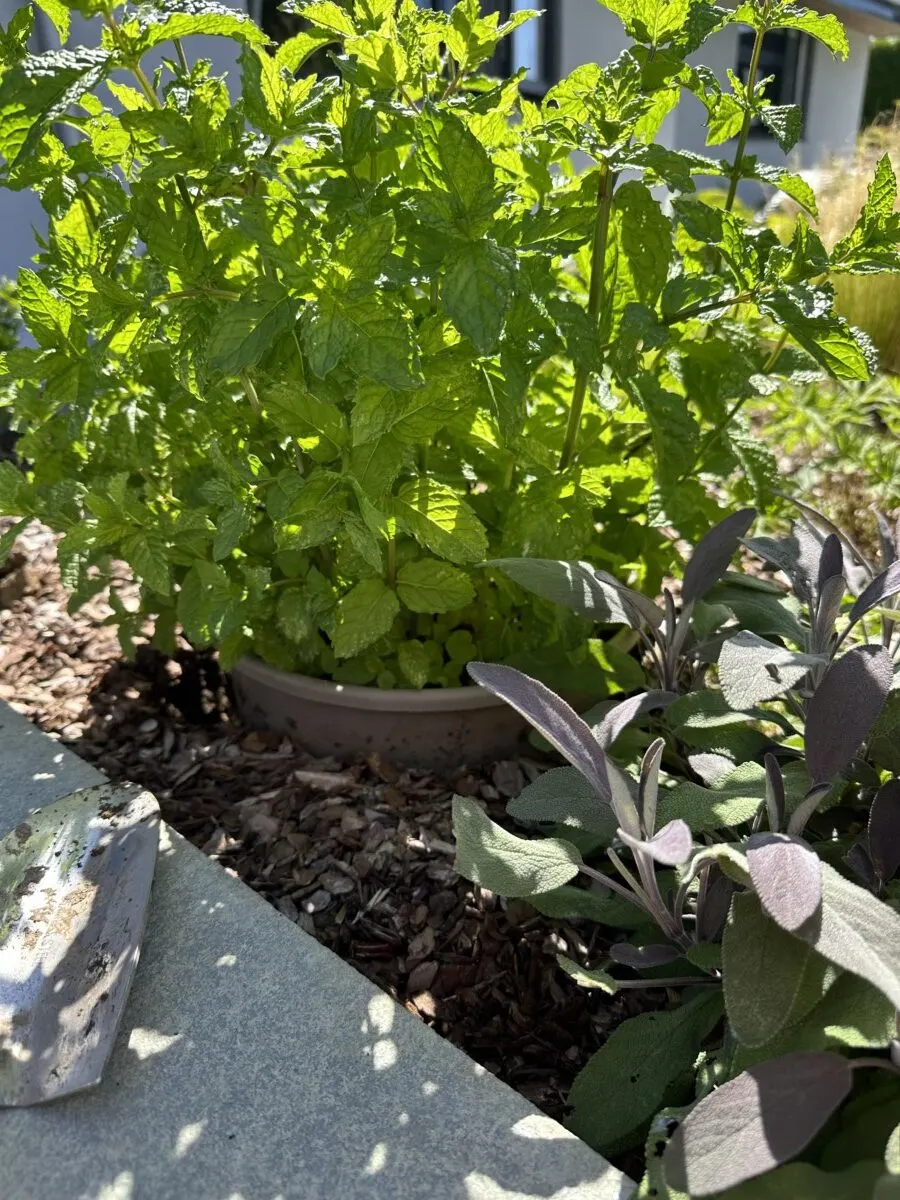McKayla Davis
Contributing Writer
Mint is a widely beloved herb, known for its refreshing fragrance and versatile flavor, which enhances everything from drinks to dishes. However, its vigorous growth can present challenges when planted directly in a garden. If left unchecked, mint has a tendency to overrun other plants, often crowding them out. Fortunately, by planting mint in a pot buried in the ground, you can enjoy its benefits without worrying about it taking over your garden space. In this article, we’ll explore why this planting method works so well and share some unique ways to use mint in your home and garden.
Why Plant Mint in a Pot Buried in the Ground?
- Control Overgrowth
Mint spreads rapidly through its roots, making it a persistent ground-covering plant. Burying a pot in the ground allows you to restrict its root system, preventing it from becoming invasive. The pot acts as a barrier that keeps the mint contained, ensuring it won’t encroach on neighboring plants. - Easier Maintenance
When mint is confined to a pot, it’s easier to manage. You can move the pot to adjust the plant’s position as needed, replace the soil to refresh the plant’s environment, or divide the plant with minimal hassle. This approach eliminates the need to constantly trim back invasive growth. - Protect Other Plants
Mint can be highly competitive, often outgrowing and overshadowing other plants in your garden bed. By planting mint in a pot, you ensure that the surrounding plants have plenty of space and access to nutrients, fostering a more balanced and thriving garden ecosystem.
Innovative Uses for Mint
- Culinary Delight
Mint is an incredibly versatile herb, perfect for both savory and sweet dishes. Use it in salads, smoothies, sauces, or desserts to add a fresh, vibrant flavor. Mint can also be a key ingredient in refreshing beverages, like iced tea or mojitos. - Aromatherapy and Stress Relief
The invigorating scent of mint makes it an excellent addition to aromatherapy practices. Dried mint leaves can be used in potpourri, essential oils, or diffusers to promote relaxation, relieve stress, and boost mental clarity. It’s also known for alleviating headaches and aiding concentration. - Natural Pest Repellent
Mint is a natural deterrent for common garden pests, including ants, mosquitoes, and rodents. The strong, aromatic oils in mint leaves are unappealing to these creatures but pleasant for humans. Planting mint around your garden or home can help reduce the need for chemical pesticides. - Medicinal Benefits
Mint is also celebrated for its medicinal properties. Its menthol content helps soothe sore throats, ease digestive discomfort, and reduce inflammation. A cup of mint tea can provide relief from common ailments, while a topical mint rub can relieve muscle tension and headaches. - Decorative Touch
Beyond its functional uses, mint is a lovely addition to any space. Its vibrant green leaves can be used as a garnish for both food and drinks, adding a fresh, elegant touch. Mint can also enhance floral arrangements, bringing a natural beauty to your home décor.
By following the tips provided in this article and exploring the many uses of mint, you’ll be able to cultivate a thriving, manageable mint plant in your garden while enjoying its benefits throughout your home. Whether you’re a seasoned gardener or a beginner, this simple yet effective planting method will help you make the most of this delightful herb.

